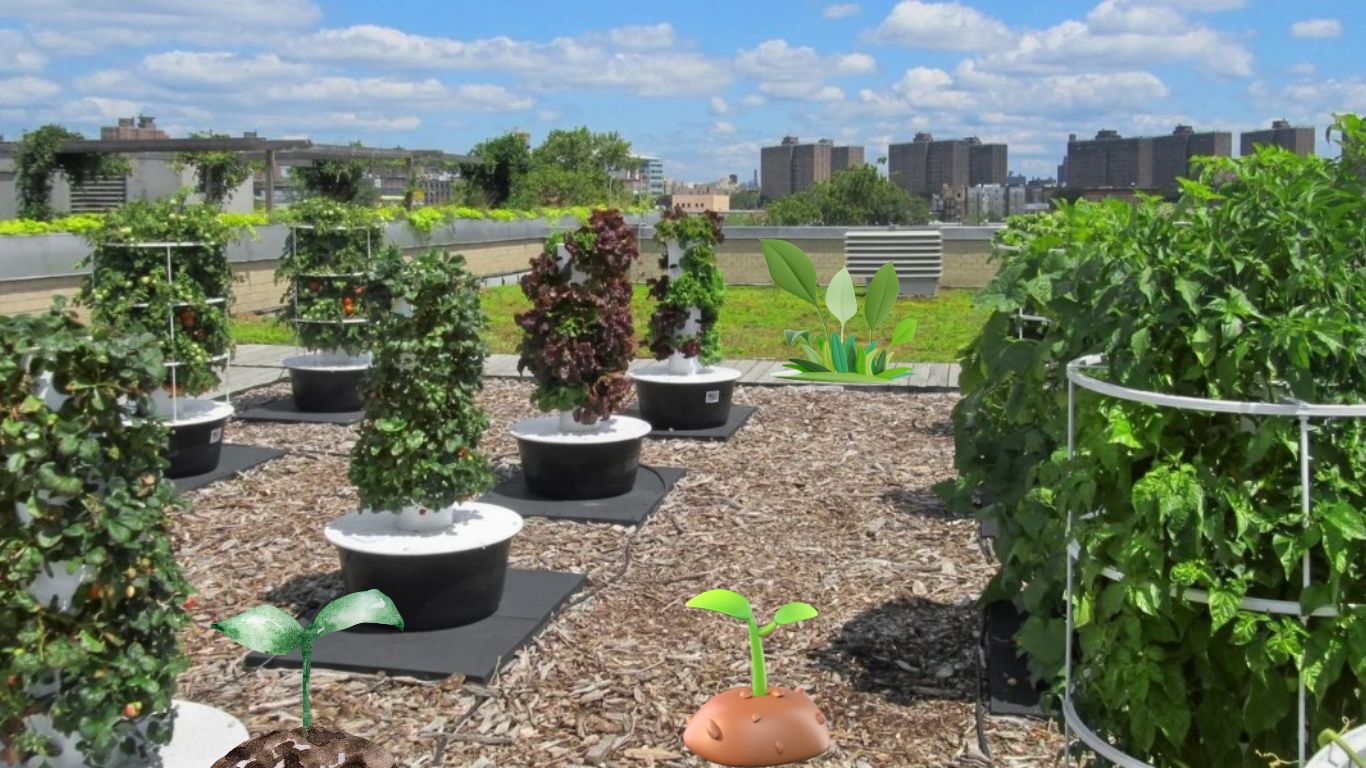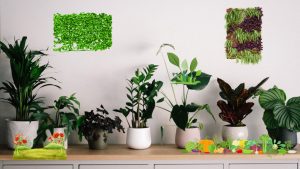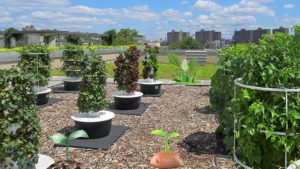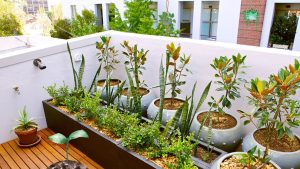Best Plants for Urban Gardening

Urban gardening has become a popular trend, offering city dwellers a refreshing opportunity to reconnect with nature, even in small spaces. Whether you’re tending a balcony, rooftop, or tiny backyard, choosing the best plants for urban gardening can make all the difference. With careful selection, you can create a vibrant, green oasis that thrives year-round, requires minimal maintenance, and even attracts wildlife.
In this article, we’ll explore some of the top plants for urban gardening, ideal for maximizing small spaces and adding visual appeal. You’ll also find advice on how to incorporate them into your garden, from architectural plants that provide structure to fruit trees that double as space savers.
Why Choose the Best Plants for Urban Gardening?
Urban gardens are often limited in size, making it essential to select plants that look good and offer longevity and versatility. The best plants for urban gardening should provide interest throughout the year, thrive in compact spaces, and potentially serve multiple purposes, such as acting as screens or offering shelter for wildlife.
In addition, plants for urban gardens should be hardy enough to withstand environmental challenges like heat, pollution, and lack of natural soil. That’s why it’s important to pick varieties that are adaptable and capable of flourishing in containers, raised beds, or vertical structures.

Best Plants for Urban Gardening
Below is a list of twelve excellent plants that thrive in urban environments. These selections will help bring color, texture, and life to your small space while being easy to maintain.
1. Trachelospermum jasminoides (Star Jasmine)
A perfect addition for small urban spaces, Trachelospermum jasminoides is a climbing plant that offers evergreen leaves and scented flowers during the summer. It can be grown against walls or fences, creating a lush, vertical garden. This plant is slightly tender, making it well-suited to the warmer microclimates often found in cities.
2. Euphorbia characias subsp. wulfennii
Known for its striking architectural form, Euphorbia characias subsp. wulfennii offers structure to an urban garden throughout the year. Its acid-yellow blooms in spring make it a great companion for tulips. It’s a low-maintenance, evergreen plant that provides visual interest even in the off-season.
3. Phyllostachys aureosulcata (Yellow Groove Bamboo)
Bamboos, particularly Phyllostachys aureosulcata, are fantastic for urban gardens. This variety is known for its golden stems, which add a contemporary touch. It’s ideal for creating natural hedges and screens, but you may want to grow it in large containers to prevent it from spreading uncontrollably.
4. Dicksonia antarctica (Tree Fern)
Tree ferns like Dicksonia Antarctica are perfect for shady corners, especially in urban settings where their distinctive form can add a dramatic, tropical feel. They thrive in urban microclimates, often retaining their lush foliage year-round. In colder weather, protecting the crown with straw or horticultural fleece can ensure they remain healthy.
5. Hydrangea quercifolia (Oakleaf Hydrangea)
If you’re seeking plants with multi-season appeal, Hydrangea quercifolia is an excellent option. With its showy, cone-shaped flowers that last from summer through autumn and oak-shaped leaves that turn rich shades of red in the fall, this plant is ideal for smaller spaces that need a pop of seasonal color.
6. Rainbow Chard
Urban gardeners who want a mix of beauty and functionality will love Rainbow Chard. Its bright, colorful stems not only look stunning but are also edible. If you’re growing vegetables in your small urban garden, rainbow chard offers a dual purpose by adding a decorative element along with a delicious harvest.

7. Dahlia ‘Bishop of Llandaff’
Thanks to the warmer urban climates, Dahlia ‘Bishop of Llandaff’ can often be left in the ground year-round, provided they are covered with mulch in colder months. The vivid red flowers and dark purple foliage provide a striking contrast, making it a great choice for an urban garden with contemporary styling.
8. Topiary (Yew, Ilex crenata, Lonicera nitida)
For year-round structure, topiary is ideal. In small spaces, neat, sculpted plants can provide architectural interest. Yew, Ilex crenata, and Lonicera nitida are all fantastic alternatives to boxwood, which can suffer from pests and diseases in urban environments.
9. Amelanchier lamarckii (Juneberry)
If you have room for a small tree, Amelanchier lamarckii is a fantastic option. In spring, it produces beautiful white blossoms followed by black berries in summer, and in autumn, its leaves turn a fiery orange. This tree also supports local wildlife, providing nectar for pollinators and food for birds.
10. Trained Fruit Trees (Stepover Apples, Espaliered Fruit Trees)
Urban gardening can still include fruit trees if you select space-saving varieties. Stepover apples, for example, can be used to edge a small vegetable patch or patio. Cordon and espaliered fruit trees are also great choices, as they grow flat against a wall or fence, saving space and offering fresh fruit in late summer.
11. Geranium ‘Orion’
A hardy perennial, Geranium ‘Orion’ blooms for an extended period, providing beautiful violet flowers from early summer into the fall. It is versatile and can thrive in both sunny and shady areas, making it perfect for urban gardeners with less control over sunlight exposure.
12. Calamagrostis x acutiflora ‘Karl Foerster’
Ornamental grasses, such as Calamagrostis x acutiflora ‘Karl Foerster’, add a modern touch to urban gardens. This tall, slender grass works well in tight spaces and creates a light, airy feel. It also maintains its shape throughout the winter, giving year-round visual appeal.
Designing Your Urban Garden
When planning an urban garden, it’s essential to think vertically. Utilize walls, fences, and even trellises to grow climbing plants or espalier fruit trees. This not only maximizes the available space but also creates an inviting atmosphere where greenery surrounds you.
For best results, try to limit your plant palette. While it may seem tempting to include a wide variety of plants, sticking to a cohesive theme can make a small space feel larger. Choose a mixture of plants that offer interest in multiple seasons, such as evergreen climbers, perennials with long flowering periods, and architectural grasses.
Container gardening is another fantastic option for urban spaces. Large pots can house trees, shrubs, or flowers, while smaller containers can hold herbs, salad greens, or ornamental grasses. By using containers of different sizes, you can create layers in your garden, adding depth and variety to your space.
Additionally, don’t forget to encourage wildlife in your garden. The best plants for urban gardening are those that support biodiversity. Choose species that attract pollinators, such as bees and butterflies, or provide food and shelter for birds. This will enhance the natural beauty of your garden and create a peaceful, lively environment.
Low-Maintenance Plants for Busy City Dwellers
One of the challenges of urban gardening is finding plants that require minimal upkeep. Luckily, many of the best plants for urban gardening are low-maintenance. Plants like Euphorbia characias, Trachelospermum jasminoides, and Geranium ‘Orion’ thrive without much attention. Choose evergreens or long-blooming perennials to reduce the time you spend pruning and replanting.
Ornamental grasses, such as Calamagrostis x acutiflora ‘Karl Foerster’, require little maintenance and still look great throughout the year. Grasses work well in minimalist gardens and can handle the harsher urban environment. Additionally, topiary plants like yew or Ilex crenata can be shaped to your liking but do not need constant pruning, making them ideal for busy city dwellers.

FAQ Section
1. What are the best plants for urban gardening in small spaces?
Some of the best plants for urban gardening in small spaces include Trachelospermum jasminoides, Euphorbia characias, and Hydrangea quercifolia. These plants offer long-lasting interest and thrive in compact environments.
2. Can I grow fruit trees in an urban garden?
Yes, you can grow fruit trees in urban gardens! Opt for space-saving varieties like stepover apples or espalier fruit trees, which can be trained to grow flat against a wall or used as a screen.
3. How do I maintain my urban garden throughout the year?
To maintain your urban garden year-round, choose evergreen plants like Euphorbia characias or topiary plants. Add mulch in winter to protect delicate plants like dahlias, and cover the crowns of tree ferns with horticultural fleece to shield them from frost.
4. What plants are best for attracting wildlife to an urban garden?
Plants like Amelanchier lamarckii, Geranium ‘Orion’, and Rainbow Chard are great for attracting wildlife to urban gardens. These species provide nectar, shelter, and food for birds, bees, and butterflies.
5. Are there low-maintenance plants suitable for busy city dwellers?
Yes, many plants for urban gardening are low-maintenance. Euphorbia characias, Geranium ‘Orion’, and ornamental grasses like Calamagrostis x acutiflora are all great options for those who prefer plants that require little care.
Urban gardening is a fantastic way to bring greenery into your city life. By carefully selecting the best plants for urban gardening, you can create a thriving, low-maintenance space that offers beauty and benefits throughout the year. With the right combination of plants, you can enjoy a lush, productive garden even in the heart of the city.

Leave a Reply